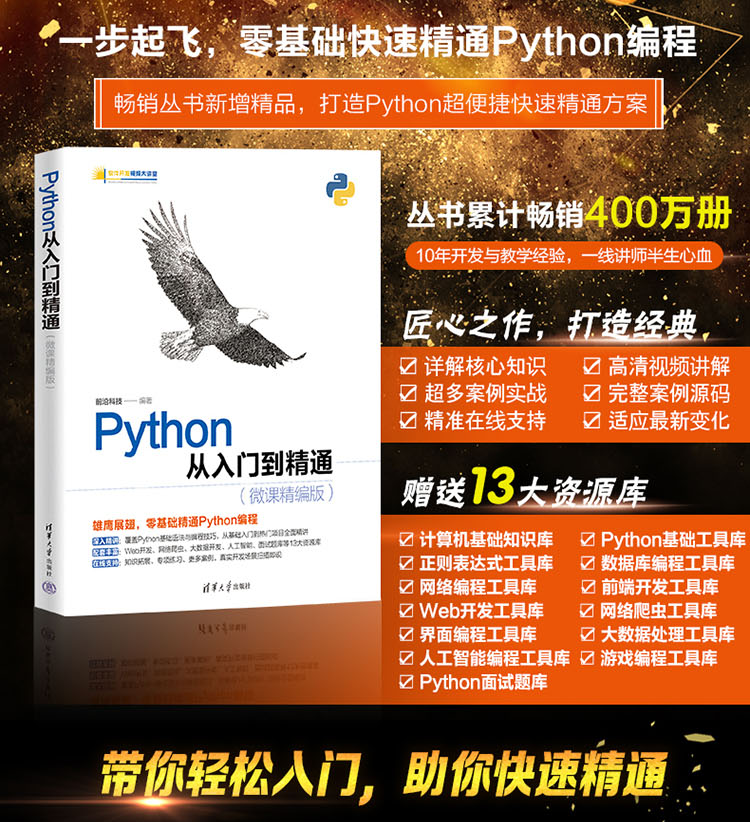用Python逐步创建语音模拟器。
微信搜索关注《Python学研大本营》,加入读者群,分享更多精彩

1、简介
使用Python、pyttsx3和SpeechRecognition库能快速创建语音模拟器。

用Python逐步创建语音模拟器
2、项目要求
首先,在机器上安装Python,如果设备上已经安装了Python,请跳过这一步骤。
要安装Python,请访问Python官方网站:https://www.python.org/downloads/并下载它。
接下来,安装SpeechRecognition和pyttsx3库。在命令提示符或终端中输入以下命令:
pip install SpeechRecognition
pip install pyttsx3
SpeechRecognition:用于录制声音并将其转换为文本。
pyttsx3:将文本转换为声音。
3、编码步骤
步骤1
导入库。示例代码如下:
import speech_recognition as sr
import pyttsx3
为什么要使用“as sr”:简化代码。例如,可以使用sr.Recognizer()来代替speech_recognition.Recognizer()。
步骤2
rec = sr.Recognizer()
rec = sr.Recognizer()这行代码创建了一个名为rec的新的Recognizer对象。
步骤3
with sr.Microphone() as src:
print("Say something...")
audio = rec.listen(src)
text = rec.recognize_google(audio)
with sr.Microphone() as src:这行代码指示计算机监听麦克风。麦克风现在被称为src。
print("Say something..."):这行代码指示计算机打印一条消息,内容是“Say something...(说点什么...)”。这是对使用者说话的提醒。
audio = rec.listen(src):这行代码告诉计算机听一段时间麦克风的声音,并将录制的声音存储为audio。
text = rec.recognize_google(audio):这行代码告诉计算机使用Google语音识别技术将录制的声音(audio)转换为文本。文本将以text形式存储。
步骤4
engine = pyttsx3.init()
这行代码指示计算机激活语音合成器,用于将文本转换为声音。
步骤5
engine.say(text)
这行代码指示计算机使用语音生成器(engine)朗读刚刚说过的文本(text)。这就像按下录音设备上的“播放”按钮,就能听到刚刚录制的内容。
步骤6
engine.runAndWait()
这行代码指示计算机在继续下一步之前等待语音生成器(engine)朗读完文本(text)。这就像等待录音播放完毕后再关闭设备。
步骤7
运行程序并说些什么。
注意:
如果程序无法运行,请尝试执行以下操作:
pip install setuptools
4、完整代码
import speech_recognition as sr
import pyttsx3
rec = sr.Recognizer()
with sr.Microphone() as src:
print("Say something...")
audio = rec.listen(src)
text = rec.recognize_google(audio)
engine = pyttsx3.init()
engine.say(text)
engine.runAndWait()
推荐书单
《Python从入门到精通(微课精编版)》
《Python从入门到精通(微课精编版)》使用通俗易懂的语言、丰富的案例,详细介绍了Python语言的编程知识和应用技巧。全书共24章,内容包括Python开发环境、变量和数据类型、表达式、程序结构、序列、字典和集合、字符串、正则表达式、函数、类、模块、异常处理和程序调试、进程和线程、文件操作、数据库操作、图形界面编程、网络编程、Web编程、网络爬虫、数据处理等,还详细介绍了多个综合实战项目。其中,第24章为扩展项目在线开发,是一章纯线上内容。全书结构完整,知识点与示例相结合,并配有案例实战,可操作性强,示例源代码大都给出详细注释,读者可轻松学习,快速上手。本书采用O2O教学模式,线下与线上协同,以纸质内容为基础,同时拓展更多超值的线上内容,读者使用手机微信扫一扫即可快速阅读,拓展知识,开阔视野,获取超额实战体验。
《Python从入门到精通(微课精编版)》![]() https://item.jd.com/13524355.html
https://item.jd.com/13524355.html

精彩回顾
微信搜索关注《Python学研大本营》,加入读者群,分享更多精彩
访问【IT今日热榜】,发现每日技术热点





















 1758
1758











 被折叠的 条评论
为什么被折叠?
被折叠的 条评论
为什么被折叠?








